Questionwhat is the best way to mate betas?
also,should I separate the mother from the eggs?
AnswerHannah,
I will apologize for the long answer. Since I breed the Betta fish, I like to make sure people understand the breeding and taking care of the fry before they actually do it. So, again, my apology.
Breeding is very time consuming and not cheap. The breeding tank can be no less that 10 gallons. I like to ask people, that want to breed,a couple of questions first.
1. Do you have space to jar and house up to hundreds of males as they grow? The female can lay 50 to 500+ eggs during one spawning. The males need to be separated from the females around 2 months old, or when they start showing a lot of aggression. You will have to put only 1 male Betta in that container, and will have to have a heater in there too. As we know containers are too small for a heater, so you will want to place the males in a tank no smaller than 2.5 gallons. That could mean hundreds of 2.5 gallon tanks and heaters to go in each one.
2. Do you have time to do frequent water changes? After the fry are 2 weeks old, you will need to do water changes at least every other day. You will want to siphon the water out and while doing that you will be cleaning the bottom of their tank. You will then have to add back in, conditioned water the same temperature as the tank. Meaning if the temp in the tank is 82 degree, than the clean and conditioned water also has to be 82 degrees.
3. Do you have time to feed them multiple times a day? The fry will need to be fed 4 to 5 times a day. It is very easy to over feed them, so you have to give them food according to their size and age.
4. Are you prepared to grow live food of assorted kinds to feed the fry at various growth stages?
They will need live micro worms, live vinegar eels, and live brine shrimp. You can feed them liquid fry food and Hikari Tropical First Bites. The last two are not good basic everyday food. If you want to help make sure your fry grow good and strong, you will want to feed them the live food mostly.
5. Are you prepared to destroy defective babies? Culling is important so that only the strong healthy fry grow to become beautiful full grown Betta's. The fry that have bent spines, that swim upside down, or that are just now growing will have to be removed and either thrown away or fed to larger fish you might have in another tank. This is not a fun thing to do, but it is necessary for the raising of Betta fish or any other kind of fish as well.
6.Can you find an outlet to sell/give away your grown spawn? Before you attempt breeding, have a place for all the fry to go to when they are old enough. Sometimes you can sell them to your local fish stores for either cash or credit for supplies. If you have 300 fry and no where for them to go, you will find yourself in a situation where you will have hundreds of fish and no room to put them.
If you answer yes confidently to ALL the above questions, then pick a nice pair and try your hand in breeding.
Breeding Betta fish
The spawning tank needs to be 10 gallons. When adding the water, make sure you don't put in more than 4 inches of water. Make sure you have a sponge filter going in that tank. This is a must. I make my own filter because I couldn't find the right one. Betta's don't like any kind of current so regular filters won't work. If you need help with the filter and you can't find a sponge filter let me know and I will show you how to make one. The tank needs time to set up, or cycle and that takes no less than 2 weeks. You want to add the water, conditioned of course, the filter and the heater in your 4 inches of water. Turn your pump on and let the tank run with no fish. Some people use fish to cycle tanks and if you chose to do that, then make sure you pick another tropical fish. DO NOT add goldfish to your Betta tank to help cycle the aquarium. While tank is cycling, add some live plants. You can add fake plants but if you do make sure they are silk plants and not plastic. The Betta has beautiful long fins and tail and they can easily be torn or ripped off just by swimming by a plastic plant. Once your tank is set up you can now add your fish. Some people add both the male and female in the tank at the same time. I don't. I add my male, and let him swim around and check out his new home. I leave him in there by himself for 48 hours. This gives him time to establish its his territory and that ha is the only male in the tank. After the 48 hours, I add the female. She does NOT go free swimming in the tank with the male. She goes into a hurricane lamp cover. She is still protected from the male yet he can see her better and will swim all around her flaring out his fins. If he hasn't already began building his bubble nest, he will start now that she is in the same tank with him. He will go back and forth from flaring at her and building the nest. After she has been in the cover for a few hours, I release her into the main tank. Before you do this, make sure you have the time to sit and watch. The male will be very aggressive, but if he gets out of hand the female will either need to be removed from the tank, or placed back in the hurricane lamp cover. I always wait and if the female starts to show that she is getting tired or if the male is just on her constantly, I will put her back in the hurricane cover for a couple more hours. You will see horizontal lines on the female, unless she is very dark. Those lines mean she is scare or not ready for mating. When you see the lines go vertical, that means she is ready for breeding and is again released into the main tank. If she is ready, she will swim to the nest and have a look around. If she is satisfied the nest is good, she will then do what I call a had stand. She will be under the nest with her head down and her tail up. The male will then swim to her and flip her upside down and gently squeeze her. This releases the eggs so that he can fertilize them. He will then pick up the eggs in his mouth and blow them into the nest. It will look like he is eating them, but he isn't. Sometimes the female will help him place the eggs in the nest. Spawning can last anywhere from 1 hour to 10 hours or more. Once spawning is done the male will chase the female from the nest. At that time, remove her from the tank and place her back in hers. Feed her well. If she has any injuries, treat the water with finfix. This will help heal her fins. The father will stay with the eggs for 36 to 48 hours until the fry are free swimming. At that time the male is remove and your job begins. I hope this helps. If you need help with raising the fry just let me know and I can help you there too.

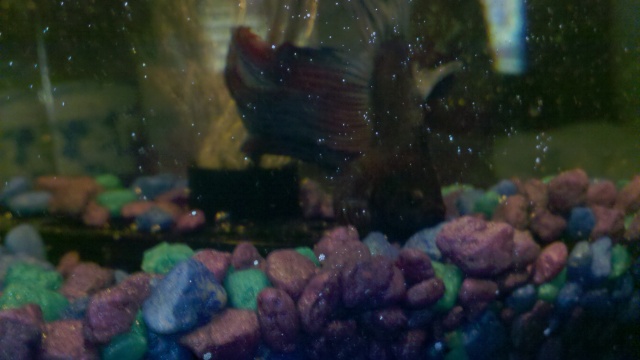 betta pregnancy
Question
betta
I had my female betta in a 50 gallon fis
betta pregnancy
Question
betta
I had my female betta in a 50 gallon fis
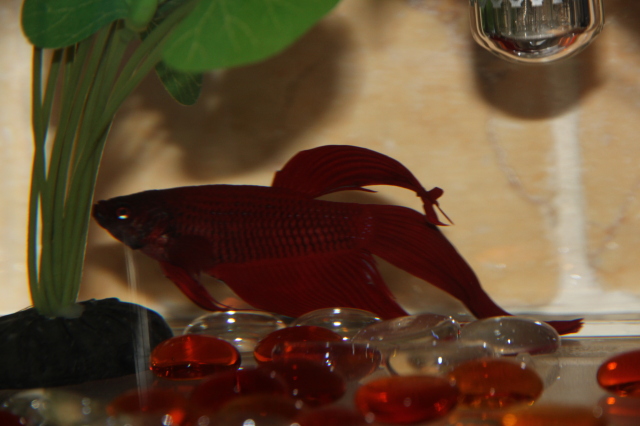 More on Lyndon
QuestionQUESTION: Hi again. I received both of yo
More on Lyndon
QuestionQUESTION: Hi again. I received both of yo
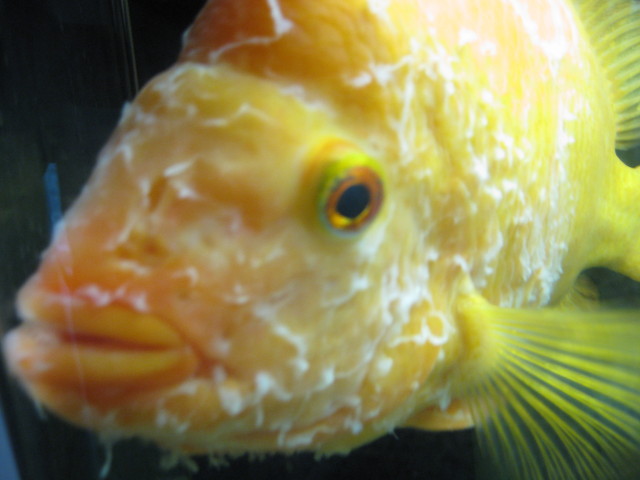 african cichilid
QuestionIMG_0364.jpg
QUESTION: We have a red dev
african cichilid
QuestionIMG_0364.jpg
QUESTION: We have a red dev
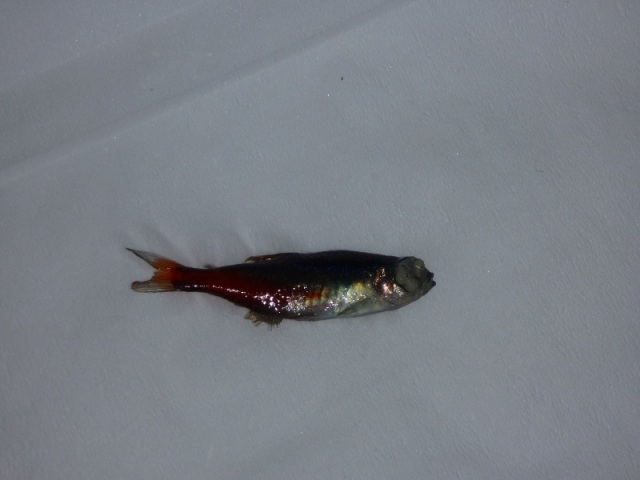 Neon tetras getting sick.
Question
tetra
Hi there,
Ive wanted to ask this questio
Neon tetras getting sick.
Question
tetra
Hi there,
Ive wanted to ask this questio
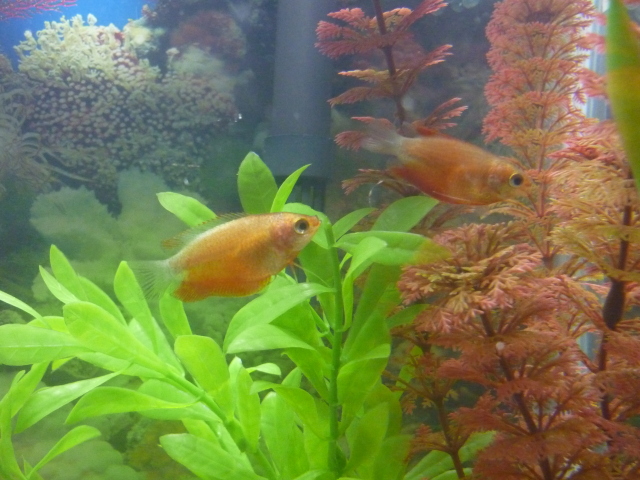 Red Dwarf Gouramis.
Question
Red Gouramis
I recently bought to red dwarf go
Red Dwarf Gouramis.
Question
Red Gouramis
I recently bought to red dwarf go